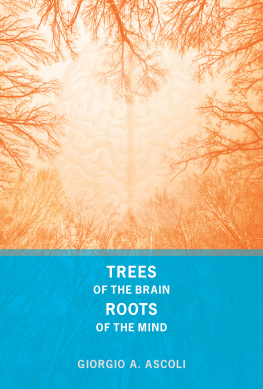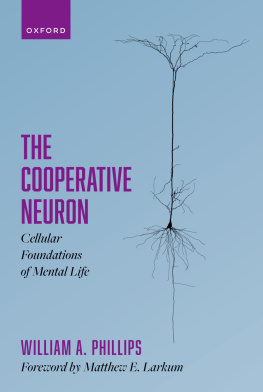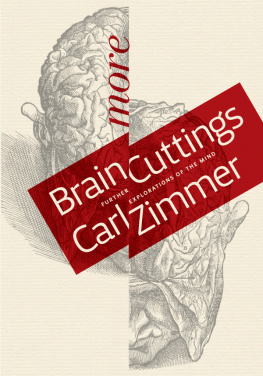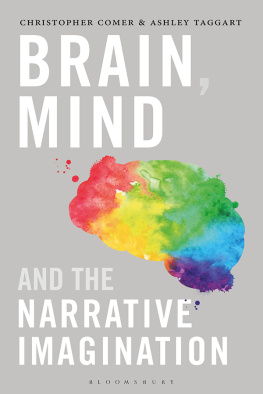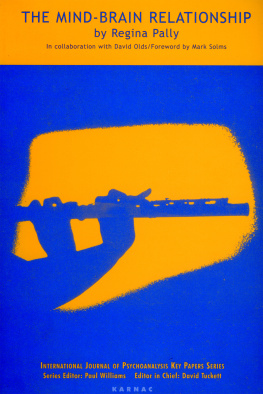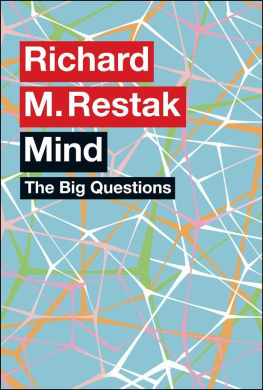Giorgio A. Ascoli - Trees of the Brain, Roots of the Mind
Here you can read online Giorgio A. Ascoli - Trees of the Brain, Roots of the Mind full text of the book (entire story) in english for free. Download pdf and epub, get meaning, cover and reviews about this ebook. year: 2015, publisher: MIT Press, genre: Religion. Description of the work, (preface) as well as reviews are available. Best literature library LitArk.com created for fans of good reading and offers a wide selection of genres:
Romance novel
Science fiction
Adventure
Detective
Science
History
Home and family
Prose
Art
Politics
Computer
Non-fiction
Religion
Business
Children
Humor
Choose a favorite category and find really read worthwhile books. Enjoy immersion in the world of imagination, feel the emotions of the characters or learn something new for yourself, make an fascinating discovery.
- Book:Trees of the Brain, Roots of the Mind
- Author:
- Publisher:MIT Press
- Genre:
- Year:2015
- Rating:5 / 5
- Favourites:Add to favourites
- Your mark:
- 100
- 1
- 2
- 3
- 4
- 5
Trees of the Brain, Roots of the Mind: summary, description and annotation
We offer to read an annotation, description, summary or preface (depends on what the author of the book "Trees of the Brain, Roots of the Mind" wrote himself). If you haven't found the necessary information about the book — write in the comments, we will try to find it.
Trees of the Brain, Roots of the Mind — read online for free the complete book (whole text) full work
Below is the text of the book, divided by pages. System saving the place of the last page read, allows you to conveniently read the book "Trees of the Brain, Roots of the Mind" online for free, without having to search again every time where you left off. Put a bookmark, and you can go to the page where you finished reading at any time.
Font size:
Interval:
Bookmark:
Giorgio A. Ascoli
The MIT Press
Cambridge, Massachusetts
London, England
2015 Massachusetts Institute of Technology
All rights reserved. No part of this book may be reproduced in any form by any electronic or mechanical means (including photocopying, recording, or information storage and retrieval) without permission in writing from the publisher.
MIT Press books may be purchased at special quantity discounts for business or sales promotional use. For information, please email .
This book was set in Stone Sans Std and Stone Serif Std by Toppan Best-set Premedia Limited. Printed and bound in the United States of America.
Library of Congress Cataloging-in-Publication Data
Ascoli, Giorgio A.
Trees of the brain, roots of the mind / Giorgio A. Ascoli.
pagescm
Includes bibliographical references and index.
ISBN 978-0-262-02898-1 (hardcover : alk. paper)eISBN 978-0-262-32901-91. Neural circuitry.2. Neural networks (Neurobiology)3. Neural transmission.4. Mind and body.5. Brain.I. Title.
QP363.3.A83 2015
573.85dc23
2014034243
BRAINFOREST GLORY: Since our first clear glimpse of a neuron over a century ago, humans have been awed by the beauty of these tiny tree-like objects. Perhaps our species recent evolutionary stint as arboreal primates has hard-wired us to love the sights of trees and forests! Thus, as neuroscience rapidly advances our ability to see both the brains trees and its vastly intricate and diverse forests, we may find that the most beautiful landscape of all is the one within.
Stephen J. Smith
The human brain is often hailed as the most complex object in the universe. Much of the brain complexity is due to the massive web of connections and communication formed by its tens of billions of nerve cells through tiny tree-like structures. The computational power of such an intricate information-processing system is apparent in the depth and breadth of every sentient beings mental life. Although the complexity of the brain and the richness of the mind are nowadays readily recognized by scientists and nonscientists alike, my aim with this book is to reveal a yet well-kept secret: the stunning beauty of the brains cellular form.
If we were to enlarge a human brain thousandsfold, to a first approximation each nerve cell would literally look like a tree with all of its intricate branching. A small region of the nervous system, such as those dedicated to moving your left pinky toe or to perceiving a dim blue light in the upper right corner of your eyesight, would at this magnified scale resemble a gigantic forest with millions of fantastic trees of all sizes and shapes. In this regard the entire brain can be viewed as a whole neurobotanical world completely filled with trees. These nerve trees are as beautiful and awe-inspiring as the most magnificent of magnolias, baobabs, and angel oaks. But unlike real-world trees, the microscopic trees in our brains make us move, feel, think, remember, plan, love, and enjoy life. I hope that my writing will inspire you to embrace them with your imagination.
The neurosciences are rapidly and increasingly entering into the mainstream discourse of our society, from economy to medicine, from technology to psychology, from politics to leisure. Yet media reports of new discoveries about the structure and function of the nervous system are by necessity somewhat detached from the complex technical details of the research laboratory. Even the most interested and educated professionalslawyers, analysts, physicians, engineerstypically attain only a superficial understanding of the mechanisms actively investigated by neuroscientists. In contrast, the source information is described in specialized journals dense with jargon that is mostly unintelligible to outsiders. It takes on average more than a decade of dedicated doctoral and postdoctoral training for the best and brightest college graduates to develop the independent ability to access and contribute to the frontier of neuroscience knowledge.
Nevertheless, even the most experienced and accomplished researchers, when staring into their microscopes, are often captivated by the arresting splendor of nerve cells. It doesnt take a Ph.D. in neuroscience to enjoy the spectacular structure of the cellular constituents of nervous system any more than it takes a Ph.D. in music to appreciate Beethovens Ninth Symphony. It seems unfair not to share the spring of such pleasure and inspiration.
Yet perhaps the biggest challenge to understanding our brains lies in connecting the subjective experience with the shape and activity of these nerve cells. We can measure the temperature of far-away galaxies with stupendous accuracy, but we are clueless when it comes to understanding why we remember certain episodes of our past and not others. This embarrassing ignorance creates a level playing field between the Nobel-winning neuroscientist and a random lumberjack. They both remember (or forget) what they had for breakfast the day before yesterday, and neither really understands the neural mechanism underlying her or his own mental state. Moreover, the neuroscientist and the lumberjack should both put their tools down from time to time and admire the scenic view of the forest in which they are working.
Somehow, that same structural majesty of nerve cells hides the secrets behind the genesis of our mental states, so immediately accessible to every human being and so elusive to scientific investigation. This book proposes new ideas to solve some of the most intriguing mysteries of the mind using only basic architectural principles of the brain. Why do we remember certain events of our past but not others? Why is it so difficult for me to learn certain skills although I can master others without effort, and yet it might be just the opposite for you? How do we acquire certain knowledge by reading or hearing something just once, whereas memorizing other facts might take multiple rehearsals? The novel explanations of these phenomena proposed in this book are consistent with the latest findings in the field but are not yet necessarily embraced by the entire scientific community.
In order to explain how beautiful tree-shaped cells relate to our brains ability to store and even create new knowledge, we introduce and overview some basic mechanisms underlying the main functions of these nerve structures. Nevertheless, this book is emphatically not intended to provide a comprehensive introduction to neuroscience. Many other recent books are available on the brain at large, and we refer to several of them throughout our exploration as well as to excellent Web resources and, occasionally, to accessible reviews in the original scientific literature. These bibliographic references may serve as suggestions for recommended further readings or as initial pointers for interested readers to expand on specific topics.
The book aims at a broad readership, generally employs plain language, and requires no specialized background knowledge. At the same time, some of the concepts I explain, both foundational and novel, are nontrivial. On top of it all I am firmly committed to scientific accuracy. I have strived to balance ease and pleasantness of read with a progressive buildup of logical steps by adopting an informal narrative style. When introducing each novel concept, I have attempted to include an explicit disclosure of whether it reflects established factual knowledge in the research community or represents commonly accepted but yet untested assumptions or constitutes a controversial view or even a completely original working hypothesis. To increase readability I have relegated the more technical explanations to footnotes for the benefit of the interested readers, but these are not required to follow the general flow of the arguments.
Font size:
Interval:
Bookmark:
Similar books «Trees of the Brain, Roots of the Mind»
Look at similar books to Trees of the Brain, Roots of the Mind. We have selected literature similar in name and meaning in the hope of providing readers with more options to find new, interesting, not yet read works.
Discussion, reviews of the book Trees of the Brain, Roots of the Mind and just readers' own opinions. Leave your comments, write what you think about the work, its meaning or the main characters. Specify what exactly you liked and what you didn't like, and why you think so.

